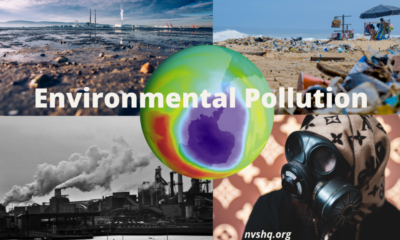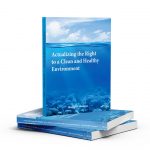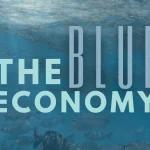By Dr. Kariuki Muigua, PhD, Africa’s Leading Dispute Resolution and ESG Expert, Africa Arbitrator of the Year 2022/3, Africa ADR Practitioner of the Year 2022/3, Member of the Permanent Court of Arbitration nominated by the Republic of Kenya, Member of the National Environment Tribunal, University of Nairobi Senior Lecturer and Managing Partner at Kariuki Muigua & Co. Advocates.*
The legal framework for corporate environmental compliance includes both international and national legal frameworks. The international framework on corporate environmental compliance is based on a number of treaties, standards and principles aimed at facilitating enforcement and compliance with environmental laws and regulations. While such treaties, principles and standards generally bind states, they are directly applicable to corporations since a state can control the activities of a corporation within its jurisdiction in compliance with its requirements under international law. The significant international framework (soft and hardlaw) on Environmental compliance includes principles developed in various significant places namely Stockholm, Rio 1992, Johannesburg, Kyoto, Paris, Glasgow and Espoo.
The 1972 Stockholm Declaration of the United Nations Conference on the Human Environment contains provisions on compensation for damage to victims of environmental liability and requires member states to adopt laws that provide for liability and compensation to victims of environmental damage such as pollution. This has been captured in Kenya under the Environmental Management and Co-ordination Act which imposes both civil and criminal liability for environmental damage. The Rio Declaration on Environment and Development of 1992 captures several principles aimed at protecting the integrity of the global environment and developmental system. These include sustainable development, public participation, inter and intra generational equity, precautionary principle and the polluter pays principle.
The United Nations Framework Convention on Climate Change (UNFCC), was signed by 154 states at the United Nations Conference on Environment and Development (UNCED) held in Rio de Janeiro from 3 to 14 June 1992. It established an international environmental treaty to combat “dangerous human interference with the climate system”, including the stabilization of greenhouse gas concentrations in the atmosphere. The Agreement aimed at strengthening the global response to the threat of climate change in the context of sustainable development. The Agreement contains provisions aimed at holding the rise in global temperature levels and controlling green-house gas emissions.
The Montreal Protocol on Substances the Deplete the Ozone Layer was signed in 1987 and entered into force in 1989 is a global agreement to protect the Earth‘s ozone layer by phasing out the chemicals that deplete it, a plan that includes both the production and consumption of ozone depleting substances. It sets limits on the production of chlorofluorocarbons (CFCs) and related substances that may lead to the depletion of the ozone layer. The Protocol is believed to have successfully met its objectives thus far as it continues to safeguard the ozone layer today.
The Vienna Convention for the Protection of the Ozone Layer was the first convention of any kind to be signed by every country involved, taking effect in 1988 and reaching universal ratification in 2009. The Vienna Convention obligates the Parties to take appropriate measures in accordance with the provisions of this Convention and of those protocols in force to which they are party to protect human health and the environment against adverse effects resulting or likely to result from human activities which modify or are likely to modify the ozone layer.
The Kyoto Protocol was adopted on 11 December 1997 and entered into force on 16 February 2005, currently with 192 Parties. The Kyoto protocol was the first agreement between nations to mandate country-by-country reductions in greenhouse-gas emissions. Kyoto emerged from the UN Framework Convention on Climate Change (UNFCCC), which was signed by nearly all nations at the 1992 Earth Summit. The Kyoto Protocol operationalizes the United Nations Framework Convention on Climate Change by committing industrialized countries and economies in transition to limit and reduce greenhouse gases (GHG) emissions in accordance with agreed individual targets, whereas the Convention itself only asks those countries to adopt policies and measures on mitigation and to report periodically.
Doha Amendment to the Kyoto Protocol was an amendment to the Kyoto Protocol adopted by decision 1/CMP.8 in accordance with Articles 20 and 21 of the Kyoto Protocol, at the eighth session of the Conference of the Parties serving as the meeting of the Parties to the Kyoto Protocol (CMP) held in Doha, Qatar, on 8 December 2012. As of 28 October 2020, 147 Parties had deposited their instrument of acceptance, therefore, the threshold for entry into force of the Doha Amendment had been met. The Amendment adds new emission reduction targets for Second Commitment Period (2012-2020) for participating countries.
Paris Climate Accord, 2015 also known as the Paris Agreement is a legally binding international treaty on climate change, adopted by 196 Parties at COP 21 in Paris, on 12 December 2015 and entered into force on 4 November 2016. Its goal is to limit global warming to well below 2, preferably to 1.5 degrees Celsius, compared to pre-industrial levels. Unlike the Kyoto Protocol, the Paris Agreement is a landmark in the multilateral climate change process because, for the first time, a binding agreement brings all nations into a common cause to undertake ambitious efforts to combat climate change and adapt to its effects.
The 27th UN Climate Change Conference of the Parties (COP27) was recently held in Cairo Egypt in from 6th to 18th November 2021. The COP27 summit brought parties together to accelerate action towards the goals of the Paris Agreement and the UN Framework Convention on Climate Change. Some of the commitments emerging from COP27 included the agreement establish a Loss and Damage Fund where the larger developed countries (and biggest emitters/polluters) contribute funds to help the smaller developing countries (the lowest emitters) to adapt to the impacts of climate change.
Convention on Environmental Impact Assessment in a Transboundary Context (The Espoo (EIA) Convention) which was adopted in Espoo, Finland in 1991 and entered into force on 10 September 1997 sets out the obligations of Parties to assess the environmental impact of certain activities at an early stage of planning. It also lays down the general obligation of States to notify and consult each other on all major projects under consideration that are likely to have a significant adverse environmental impact across boundaries.
United Nations Convention to Combat Desertification has the objective to Combat Desertification is to combat desertification and mitigate the effects of drought in countries experiencing serious drought and/or desertification, particularly in Africa, through effective action at all levels, supported by international cooperation and partnership arrangements, in the framework of an integrated approach which is consistent with Agenda 21, with a view to contributing to the achievement of sustainable development in affected areas.
Lastly, ISO 14000 entails a number of standards developed by the International Organization for Standardization to help organizations take a proactive approach to managing environmental issues. The standards challenge organizations to undertake a number of activities related to environmental governance which include taking stock of their impacts on the environment, establishing objectives and targets towards environmental management, committing to effective and reliable solutions such as prevention pollution and taking personal responsibility for conduct related to the environment. The existence of such standards is important since it allows organizations to gauge their environmental efforts against the generally accepted international criteria.
National Legal Framework for Corporate Environmental Compliance
The national legal framework for corporate environmental compliance include the Constitution of Kenya, 2010 which, inter alia, accords every person the right to a clean and healthy environment. The right includes the entitlement to have the environment protected for the benefit of present and future generations through measures contemplated in article 69; and to have obligations relating to the environment fulfilled under Article 70. These Constitutional provisions bind both the state and every person. Corporations thus have environmental obligations under the Constitution since they are artificial persons. Breach of these obligations could result in enforcement of environmental rights against the corporation and sanctions such as compensation for any victim of a violation of the right to a clean and healthy environment under Article 70 (2) (c) of the Constitution.
Environmental Management and Co-ordination Act (EMCA), 1999 is the key law in Kenya providing for the establishment of an appropriate legal and institutional framework for the management of the environment. The Act entitles every person to a clean and healthy environment and requires every person to cooperate with state organs to protect and conserve the environment and to ensure the ecological sustainable development and use of natural resources. EMCA also stipulates several measures for protection and conservation of the environmental subsectors including rivers, lakes, seas, wetlands, mountain areas, forests, biological resource and the ozone layer.
These provisions of EMCA are binding both the state and individuals and their violation could result in commission of environmental offences set out under the Act. When these offences are committed by a body corporate, the body corporate and every director or officer of the body corporate who had knowledge of the commission of the offence and who did not exercise due diligence, efficiency and economy to ensure compliance with this Act, shall be guilty of an offence (emphasis added). To aid in environmental protection and conservation, the Act lists several environmental management tools such as Environmental Impact Assessment (EIA), Strategic Environmental Assessment (SEA), Strategic Environmental and Social Assessment (SESA), Environmental Audits and Monitoring (emphasis added).
The Companies Act, 2015 calls upon directors while discharging the duty to promote the success of a company to have regard to the impact of the operations of the company on the community and the environment. The Act further mandates directors while preparing their reports to include information about environmental matters and take into account the impact of the business of the company on the environment. Climate Change Act, 2016 provides a regulatory framework for enhanced response to climate change and measures and mechanisms aimed at achieving low carbon climate development.
The Climate Change Act applies in all sectors of the economy and requires measures to be taken towards mainstreaming climate change responses in development planning, providing incentives and obligations for private sector contribution in achieving low carbon climate development and promotion of low carbon technologies. It also imposes climate change duties upon private entities which may also be required to prepare reports on the status of performance of such obligations. The Act empowers the National Environmental Management Authority (NEMA) to monitor, investigate and report whether public and private entities are in compliance with their duties under the Act. Corporates need to bear in mind the provisions of the Climate Change Act in carrying out their activities since it is relevant to corporate environmental compliance.
The Water Act, 2016 is the Act of Parliament that provides for the regulation, management and development of water resources. It enshrines the right to clean and healthy water and contains provisions that seek to curb contamination and pollution of water sources and establishes institutions to enforce the Act. Despite enactment of the Act, there are still many cases of pollution of water bodies some which are perpetrated by corporations through discharge of untreated wastes. Enforcement and compliance with the Act is necessary in attainment of the right to clean and healthy water. The Energy Act 2019 requires Energy and Petroleum Regulatory Authority (EPRA) to work with the relevant statutory authorities to formulate, enforce and review environmental, health, safety and quality standards for the upstream petroleum sector.
In addition to the Statutes, corporate environmental compliance is provided for under the respective sectoral regulations in Kenya. For instance, the Environmental (Impact Assessment and Audit) Regulations, 2003 provides for a system governing the Environmental Impact Assessment process and environmental audits. The Air Quality Regulations 2014 provide for prevention, control and abatement of air pollution to ensure clean and healthy ambient air and establishment of emission standards for various sources including industries as outlined in EMCA. The Water Quality Regulations 2006 provides for the right to clean and healthy water and obligates every person to refrain from acts and omission that may cause water pollution. The Waste Management Regulations 2006 provide a system to govern management of wastes including industrial and hazardous wastes.
*This is article is an extract from an article by Dr. Kariuki Muigua, PhD, Muigua, K., “Providing Legal Advice on Corporate Environmental Compliance in Kenya,” Available at: http://kmco.co.ke/wp-content/uploads/2021/05/ Corporate-Environmental-Compliance-in-Kenya-May-2021.pdf. Dr. Kariuki Muigua is Senior Advocate of the High Court of Kenya, Chartered Arbitrator, Kenya’s ADR Practitioner of the Year 2021 (Nairobi Legal Awards), ADR Lifetime Achievement Award 2021 (CIArb Kenya), African Arbitrator of the Year 2022, Africa ADR Practitioner of the Year 2022, Member of Permanent Court of Arbitration nominated by Republic of Kenya and Member of National Environment Tribunal (NET). Dr. Kariuki Muigua is a foremost Environmental Law and Natural Resources Lawyer and Scholar, Sustainable Development Advocate and Conflict Management Expert in Kenya. Dr. Kariuki Muigua is a Senior Lecturer of Environmental Law and Dispute resolution at the University of Nairobi School of Law and The Center for Advanced Studies in Environmental Law and Policy (CASELAP). He has published numerous books and articles on Environmental Law, Environmental Justice Conflict Management, Alternative Dispute Resolution and Sustainable Development. Dr. Muigua is also a Chartered Arbitrator, an Accredited Mediator, the Managing Partner of Kariuki Muigua & Co. Advocates and Africa Trustee Emeritus of the Chartered Institute of Arbitrators 2019-2023. Dr. Muigua is recognized among the top 5 leading lawyers and dispute resolution experts in Band 1 in Kenya by the Chambers Global Guide 2022 and was listed in the Inaugural THE LAWYER AFRICA Litigation Hall of Fame 2023 as one of the Top 50 Most Distinguished Litigation Lawyers in Kenya.
References
Climate Change Act, No. 11 of 2016, Government Printer, Nairobi.
Companies Act, No. 17 of 2015, Government Printer, Nairobi.
Constitution of Kenya 2010, Government Printer, Nairobi.
COP23, Doha Amendment to the Kyoto Protocol (2012)‘ <https://cop23.com.fj/knowledge/doha-amendmentkyoto-protocol-2012/> (Accessed 25/11/2021).
COP26, UN Climate Change Conference (COP26) at the SEC – Glasgow 2021‘ (UN Climate Change Conference (COP26) at the SEC – Glasgow 2021) <https://ukcop26.org/> accessed 17 January 2021.
Declaration of the United Nations Conference on the Human Environment Stockholm, 16 June 1972, available at https://legal.un.org/avl/ha/dunche/dunche.html (Accessed on 25/11/2021).
Environmental Management and Co-Ordination Act (EMCA), No. 8 of 1999, Government Printer, Nairobi.
Environmental (Impact Assessment and Audit) Regulations, 2003 Legal Notice No. 101 (June 13, 2003),
Environment Management and Co-ordination (Air Quality) Regulations, available at http://www.nema.go.ke/index.php?option=com_content&view=article&id=31&Itemid=171 (Accessed on 25/11/2021).
Environment Management and Co-ordination Water Quality Regulations, 2006 Legal Notice No. 120 (September 4, 2006).
Environmental Management: The ISO 14000 family of International Standards, available at https://www.iso.org/files/live/sites/isoorg/files/archive/pdf/en/theiso14000family_2009.pdf (Accessed on 25/11/2021).
Montreal Protocol and (London Amendment) on Substances that Deplete the Ozone layer, 1522 UNTS 3; 26 ILM 1550 (1987).
Ozone Secretariat, ‘The Vienna Convention for the Protection of the Ozone Layer,’ Available at:
<https://ozone.unep.org/treaties/vienna-convention> (accessed 25/11/2021).
The Paris Agreement, United Nations, 2015, available at https://unfccc.int/files/essential_background/ convention/application/pdf/english_paris _agreement.pdf (Accessed on 25/11/2021).
UN General Assembly, United Nations Framework Convention on Climate Change: resolution / adopted by the General Assembly, 20 January 1994, A/RES/48/189.
United Nations Convention to Combat Desertification (1994),
United Nations Conference on Environment and Development, Rio Declaration 1992, Available https://www.un.org/en/conferences/environment/rio1992 (Accessed on 25/11/2021).
Water Act, No. 43 of 2016, Government Printer, Nairobi.

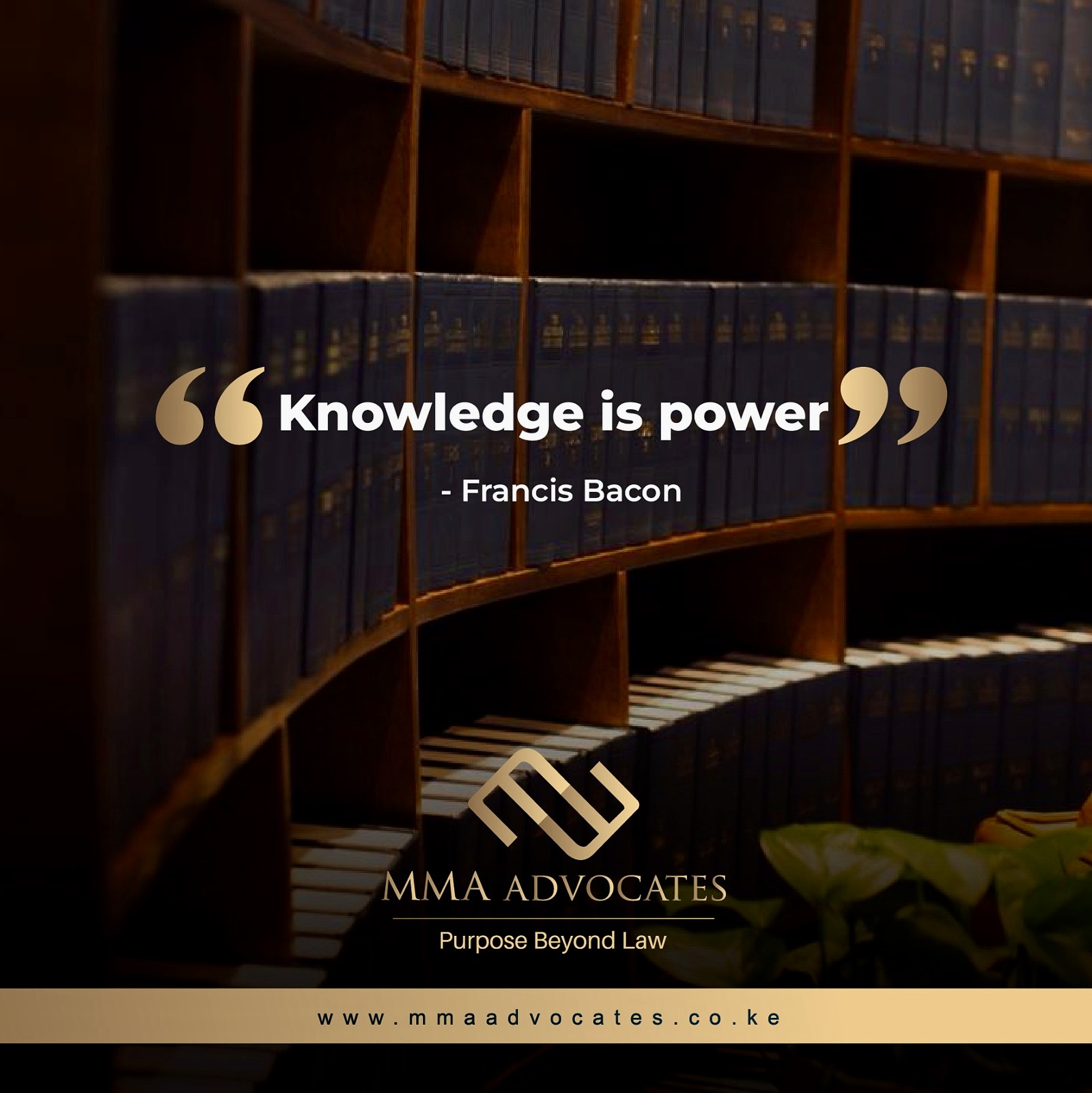



 Lawyers1 year ago
Lawyers1 year ago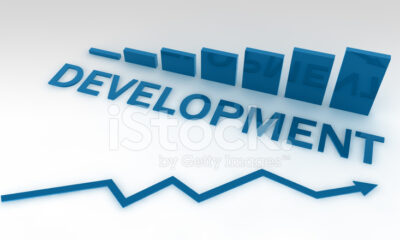
 News & Analysis3 years ago
News & Analysis3 years ago
 News & Analysis3 years ago
News & Analysis3 years ago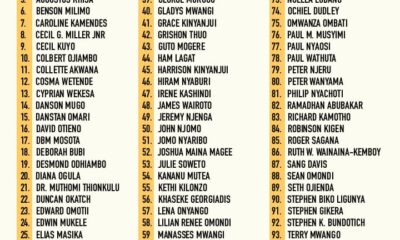
 Lawyers1 year ago
Lawyers1 year ago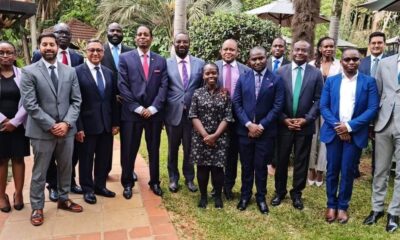
 News & Analysis2 years ago
News & Analysis2 years ago
 News & Analysis1 year ago
News & Analysis1 year ago
 News & Analysis3 years ago
News & Analysis3 years ago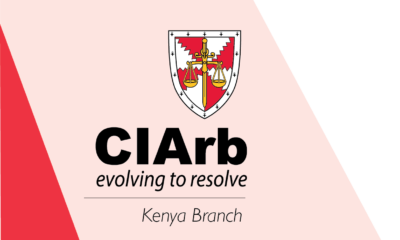
 News & Analysis1 year ago
News & Analysis1 year ago













